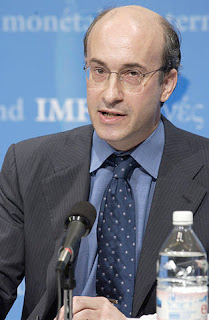Eric Lonergan, who is credited along with Adair Turner and a few others for keeping the Milton Friedman idea of helicopter money alive, has fascinating views about interest rates. Lonergan takes issue specifically with Kenneth Rogoff, but this concept he courts can be applied to Fed behavior, the ECB (which sees the importance of perpetual lending), the BOE, and the BOJ.
When I first discussed ECB helicopter loans on Talkmarkets, I emphasized the perpetual aspect of TRTLO’s. But what also is important in Lonergan’s vision is that dual interest rates makes it all work.
What Lonergan is saying is that there are different interest rates. He says that the obvious way to stimulate an economy is to use dual interest rates. Lonergan rejects the Rogoff concept of only allowing negative deposit interest rates that would also force a need for cashlessness due to potential bank runs.
Lonergan makes the need to force cash abolition obsolete. He acknowledges possible crime issues with cash, but many have pointed out the issue of the poor and travelers and their travails, should cashlessness be established, far overshadows crime issues. Lonergan calls Rogoff’s work, the Curse of Cash, a tome, a humorous reference to a book that is very long and very wordy.Â
Â

Â
But the important thing that Lonergan is offering is that TLTROs can be separated from deposit rates. TLTROs are loans, and they can be perpetual, even negative. They will stimulate buying. They are expansionary. On the other hand, money saved can be given a small positive interest rate so that savers, insurance companies and the like do not violate their own risk tolerance.
And Lonergan makes the case that negative rates on savings are not going to motivate anyone anyway. He gives this example as if physical cash were already history, but it could be done with real cash in existence. Lonergan makes a distinction between digital cash and electronic money:
Let’s think this through. In Rogoff’s futuristic world, we don’t have physical dollars, pounds, or euros in our wallets. Our digital wallets will contain digital cash. Now there are two options, this digital cash could simply be bank deposits – the current world without physical cash – or there could be a new category of deposit, created by the central bank and directly held by households, the quantity of which is determined by the central bank, analogous to bank reserves. This money could be fixed in quantity, would be credit risk free, fixed in nominal value and not convertible. The only substantive difference between this and physical cash, other than its electronic nature, is that bank deposits would not be convertible into electronic money.
In this world, reserves held by households and corporates held at the central bank would be a distinct category of base money. As we have seen with tiered reserves, these holdings could be remunerated at interest rates independent of those held by banks which are borrowed and lent into money markets and determine market interest rates. Surely if we want to boost spending we should set a sufficiently high positive interest rate on digital cash held by households in order to raise their spending? This indeed is a great reason to have digital cash – people would voluntarily swap physical for digital cash if it was remunerated at, say 5%.

